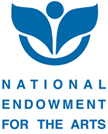Inspired Designs |
|---|
 |
I21: This paj ntaub is done on a yellow monk’s cloth, using mostly cross-stitches. The design is a pair of sparrows or chickadees perched on flowering branches. Such a pair is usually
By Kou Vue, 1980s, 21x31cm |
Back to Top |
I22: This 1990 calendar is not embroidery. It is a screen printed work by the Japan Sotoshu Relief Committee. In addition to the calendar, there are two scenes and other Hmong motif decorations, including mountains, chevs, ram’s heads, hearts, center diamonds, diagonal bars, sunshine, zigzags, and arrows. The top scene depicts the Hmong New Year courting practice of ball tossing among young people. During this week of festivities after the rice harvest and following the Hmong lunar calendar, young men and women are seen in public, wearing their finest clothes as they flirt, laugh, toss cotton balls back and forth, and sing traditional songs. It is a time to find a potential partner. The second scene involves a young man and woman, probably boyfriend and girlfriend. He is playing a wind reed pipe instrument called the qeej, a Hmong cultural identifier which sounds somewhat like a Scottish bagpipe. Hmong males who know how to play the instrument are able to express their feelings phonetically through the wind pipe sounds. The girlfriend is then able to decode these sounds into words. Typically, the qeej is played at festivals and events such as the New Year and weddings, as well as for welcoming guests and officials, and at funeral ceremonies.
|
Back to Top |
 |
I23: This is a quilt made by a Hmong woman from the East Coast of the United States. Even though it has no Hmong motifs or textiles, the process of making a quilt is much like sewing Hmong textiles, and it requires embroidery skills. When Hmong first immigrated to the United States in the mid-1970s, some families were settled in Pennsylvania where they learned the art of making quilts from the Amish people. They became friends with the Amish, and the Amish taught the women a new use for their paj ntaub skills.
|
Back to Top |
Page 1 << Page 2 << Page 3 |



